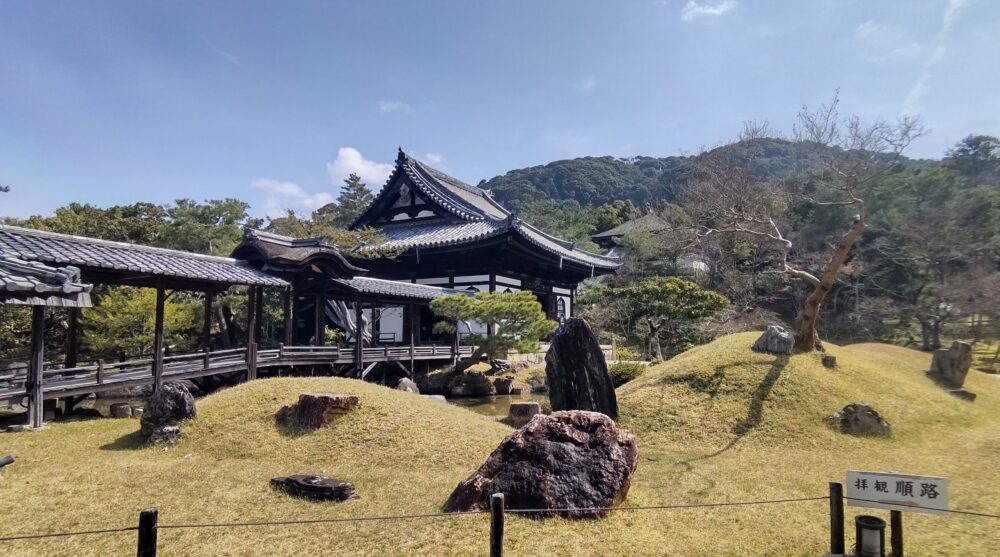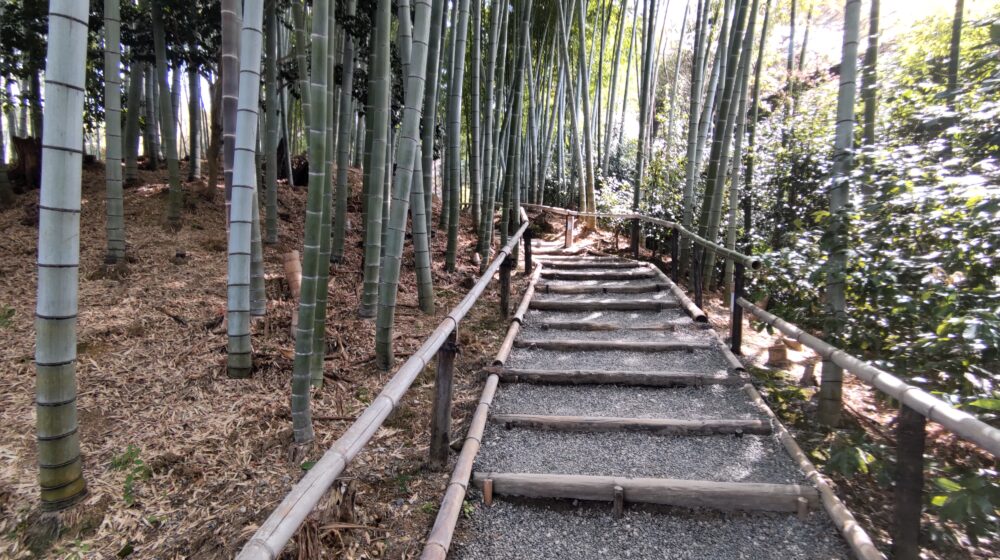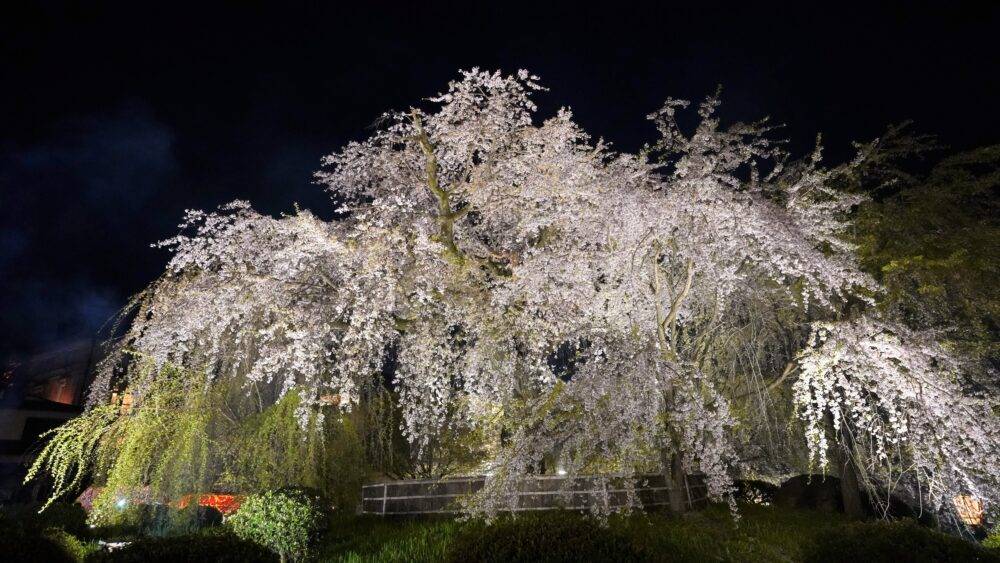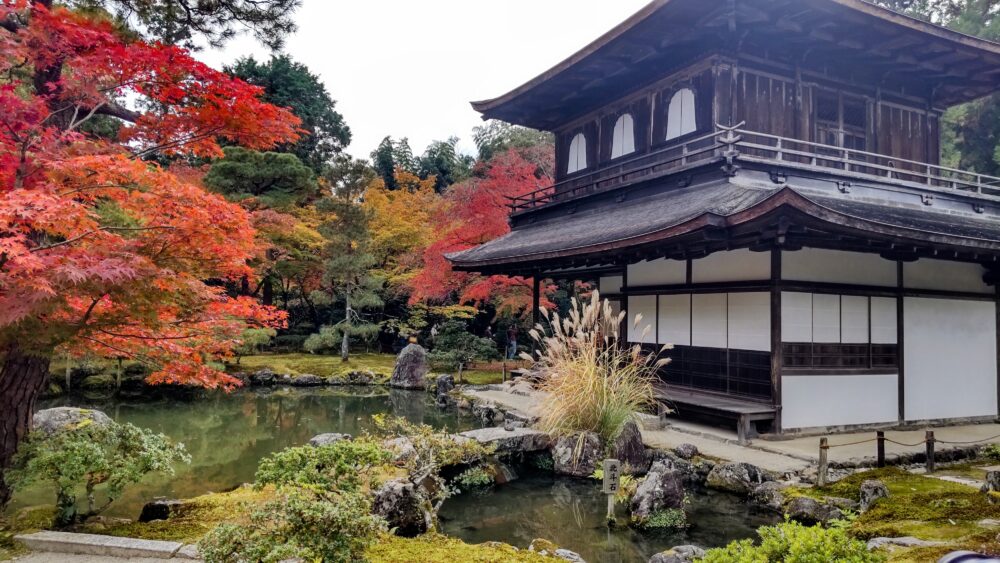Kodaiji temple : Best time to visit in 2024

Higashiyama Ward, located in eastern part of Kyoto city, brimming with history and culture, boasts a renowned tourist attractions such as Kiyomizu-dera Temple, Yasaka Shrine, Maruyama Park and Kodaiji Temple is one of them.
Kodaiji temple belongs to the Rinzai sect of Zen Buddhism. Nene, the wife of Toyotomi Hideyoshi, who was the first to unify Japan under a single ruler, built this lavish temple and its magnificent garden with the assistance of Tokugawa Ieyasu, a shogun of the Edo period, to enshrine the spirit of Toyotomi Hideyoshi. This Temple is a highly popular tourist destination and a must-see. Here are some tips about Kodaiji Temple.
History
In 1606, Nene built Kodai-ji Temple to enshrine the spirit of Hideyoshi Toyotomi who was the first to unify Japan. This Temple was built using structures that were relocated from Fushimi Castle, which had been constructed by Hideyoshi himself. These included the Hojo (reception hall), the tea ceremony room, and the powder room.
In 1624, Sanko Shoeki from Kennin-ji Temple was invited as the representative to change the sect of Kodai-ji Temple to the Kennin-ji sect. Nene passed away and was buried in the tomb “otamayama”. Sanko shoeki passed away in 1650.
The Buddha Hall and the Hojo in the temple burned down in 1789 and 1863, but Hojo was rebuilt in 1912.
Features
Kodai-ji Temple has many historically and culturally valuable buildings.
Tea house
“Onigawara-seki” and “Ihoan”

There are two old buildings “Onigawara-seki”, tile roofed hut with a Japanese demon-shaped roof ornament and the “Ihoan”, tea ceremony room. The circular window of Ihoan is called the “Yoshino-mado” and is said to have been created in memory of the Kyoto courtesan, Ms.Yoshino Daifu. By making a reservation in advance, you can participate in a tea ceremony held.
Main hall
“Kaizan-do”
The Kaisando hall is a significant cultural property of the Momoyama period. Originally a private Buddhist shrine to enshrine Nene’s adoptive parents, it was remodeled as the Kaisando Hall after the burial of the site of “Sanko shoeki” the Zen buddhism of Rinzai Kennin-ji Sect. There is a buddhist altar with a seated statue of Sanko Shoeki at the back of this hall. Additionally, the ceiling is decorated with Nene’s magnificent imperial coach.
Altar
“Otamayama”
The Otamayama, located to the east of the Kaisando Hall, is a sacred hall where Nene’s remains are buried and mourned. Inside the hall, a Buddhist altar stands at the center, with seated statues of Hideyoshi on the right and Nene on the left, and create peaceful atmosphere.
Strolling pond garden

In the center of the Kodaiji Temple grounds, there is a strolling garden with two ponds, Garyo-chi to the east and Engetu-chi Pond to the west, centered on the Kaisando Hall. The garden has been designated by Kobori Enshu, who designed the Ninomaru Garden in Nijo Castle too.
The garden is known as a representative garden of the Momoyama period. In the north of the Engetu-chi, there is the Turtle Island “Kamezima”, featuring a stone shaped like a turtle’s head. Furthermore, in the south, along the edge of the pond, there are stones arranged to resemble the feathers of a crane. Both elements are considered to be auspicious.
Hojo garden
The Hojo, which is the main hall in Kodaiji Temple, was rebuilt in 1912. This hall has a Japanese dry garden with white fine gravel spread out all over it. On the right side, there is a weeping cherry tree. In the center, there is a main entrance gate “Karamon”. The view from the corridor of main hall is breathtaking. Depending on the season, it is illuminated at night.
Two Tea houses
“Shigure-tei” and “Kasatei”

Located on the top of a hill within the ground of Kodai-ji Temple, Shigure-tei is a tea house built in the Momoyama period (1573-1615) and designated as an Important Cultural Property. The two-story structure features a waiting area on the first floor and a tea ceremony room on the second floor. The three sides of the second floor are fitted with hanging doors that can be opened upwards.
the Kasatei to the south of Shigure-tei is a smaller tea house that was originally located at Fushimi Castle and later moved to its current location. The two buildings are connected by a dirt-floor corridor.
Bamboo cave

A beautiful bamboo cave bathed in sunlight appears halfway up the top of a hill within the precincts of Kodai-ji Temple.
Japanese style cafe
“Ungoan”

In front of the Kaisando Hall, there is a Japanese cafe “Ungoan” and the garden “Tikufu-tei”. This is a cafe where you can enjoy matcha and Japanese sweets. The garden is beautifully planted with moss and maple trees. You can relax and enjoy the view from outside on a red felt bench under an umbrella, or from a seat inside.
Best season
Spring season(Late Mar to Early Apr)

Kodaiji Temple is famous for its cherry blossoms, and many visitors come every year.
The highlight is the weeping cherry tree in the Hojo Garden, which blooms with gorgeous pink flowers from late March to early April. The view of the cherry blossoms in full bloom, copper roofs wooden main gate, and the white gravel Japanese dry garden from the Hojo is stunning .Other cherry trees such as mountain cherry trees, Somei Yoshino cherry trees, and azaleas start blooming at the same time in the precincts of Kodaiji Temple.
There is also an illumination at night, where the cherry blossoms are lit up and projection mapping is performed, creating a magical atmosphere.
How to avoid crowds
Kodai-ji Temple is conveniently located near other popular tourist attractions in Kyoto. It is only a 10-minute walk from Kiyomizu-dera Temple, and a 5-minute walk from Yasaka Shrine, Maruyama Park, and Geisha district of Gion.
Kodaiji temple is open year-round, but the best time to visit is during the spring cherry blossom season (late March to mid-April) or the fall foliage season (mid-November to early December). However, during these peak seasons, the temple can get very crowded. Here are some tips to avoid crowds.
- Visit on a weekday instead of a weekend.
- Arrive early in the morning, when the temple opens at 9:00 AM.
- If visiting during peak season, take the train or walk/cycle to the temple.
- During off-peak season, it is also available to take a bus or taxi.
Information
Normal season
Open hours
9:00 – 17:30(Reception closed at 17:00)
Spring season with a night illumination
(March,15th to May,5th)
Open hours
9:00a.m. to 10:00p.m.(Reception close at 9:30pm)
The illumination start at 5:00pm
Entrance fee
| Kodaiji temple | Adult : 600yen High school and Joiner high school student : 250yen |
| Kodaiji temple and Entokuin temple | Adult : 900yen |
Address
〒605-0825 Kyoto, Higashiyama Ward, Kodaiji526
Link and Resorce
Official site
Kodaiji temple (English)





